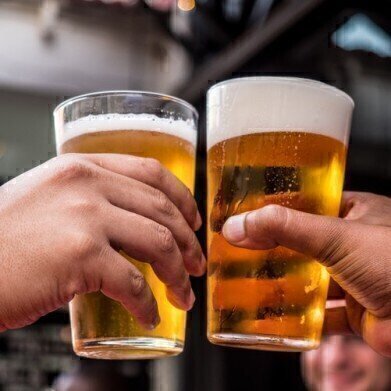LC-MS
How Does Social Distancing Affect Alcohol Consumption? - Chromatography Investigates
Oct 23 2020
Governments around the world have reacted in many ways to try and reduce the spread and impact of the virus SARS-CoV-2 and its associated disease Covid-19. The numbers of people affected globally has been increasing ever since the virus and disease spread beyond the confines of Wuhan, China in January 2020. Death rates have also been increasing with the numbers of deaths above the expected death rate reaching over 500,000 by July 2020. The World Health Organization has given the label pandemic to the outbreak and by late October 2020, the spread of the virus and disease was going through a second growth spurt in many countries.
Social distancing – avoid thy neighbour and get a drink
Governments have introduced measures including lockdowns, social distancing, and self-isolation to combat the spread of Covid-19. A paper published in the journal Addiction reports on the impact of social restrictions on consumption of alcohol and in its pattern of use compared with pre-Covid-19 days. The study follows the Australian government’s policies to close non-essential services in March 2020 including clubs and licensed premises. This severely limited the availability of alcohol to standalone liquor outlets.
A review of the literature shows conflicting epidemiological evidence regarding the degree of alcohol use following a catastrophic event. In stressful times, people may increase their alcohol consumption above normal levels due to the perceived relief from stress. But alcohol can also impair both the physiological and psychological responses to stress. There are also the consequences of a predisposition to depression or anxiety that both alcohol and stress can exacerbate.
Analysing the waste – toilets don’t lie
Knowing how much people are drinking and correlating that with behaviours can help researchers understand the effects of a catastrophic event and alcohol consumption. A recent survey in Australia focussed on alcohol sales and use in the initial Covid-19 phase. The results implied that alcohol sales and use had increased since the beginning of the pandemic. However, although surveys are a useful tool, there is evidence that they can lead to response biases in the assessment of alcohol use.
One method that has been used successfully in recent years to assess the use of alcohol and drugs is wastewater epidemiology. This involves sampling wastewater from a given population sample and analysing the samples using liquid chromatography and mass spectrometry. The use of chromatography to analyse food and drink samples is discussed in the article, A question of taste?
The data obtained by the analysis and presented in the paper suggests that the population under investigation heeded government advice to stay home and selfâ€isolate, therefore resulting in decreased social and binge drinking occurring in pubs and clubs. The evidence suggests that there was no increase in alcohol consumption, and it is likely that the major impact of the COVIDâ€19 epidemic may be a decline in alcoholâ€related problems.
Digital Edition
Chromatography Today - Buyers' Guide 2022
October 2023
In This Edition Modern & Practical Applications - Accelerating ADC Development with Mass Spectrometry - Implementing High-Resolution Ion Mobility into Peptide Mapping Workflows Chromatogr...
View all digital editions
Events
May 05 2024 Seville, Spain
May 15 2024 Birmingham, UK
May 19 2024 Brno, Czech Republic
May 21 2024 Lagos, Nigeria
May 23 2024 Beijing, China














